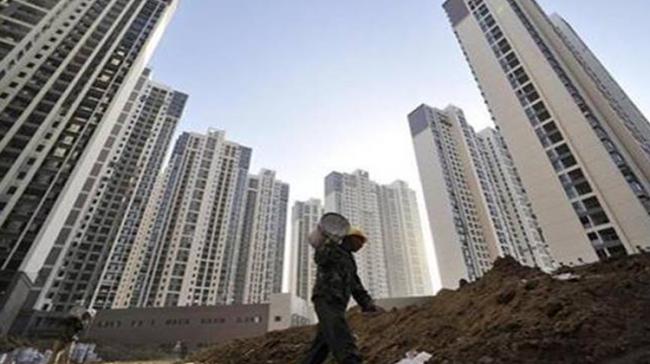Cheaper Homes, Liquidity Crunch Revive India’s Realty Sector In 2018

New Delhi: The year turned out to be an eventful one for the Indian real estate marked by the improvement in sales and its return to stability after the double blow of GST and demonetisation.
For the sector, the liquidity crunch, the rupee falling to its record low, changes in the Credit Linked Subsidy Scheme (CLSS) and recognition of home buyers as lenders to developers under the Insolvency and Bankruptcy Code (IBC) were other major events during the year.
Although real estate did not witness an increase in launches, developers say, the market registered higher sale of inventory in 2018 compared to last year.
"It was a year of stabilisation of reforms implemented in residential real estate over 2016-17. Sales numbers saw 25 per cent improvement over 2017," said Ankur Dhawan, Chief Investment Officer at PropTiger.com.
Data provided by PropTiger.com showed that units sold across the country's nine major cities in 2018 were around 3.1 lakh, around 25 per cent higher than 2.5 lakh units sold last year.
The number of new projects, however, declined this year, with around 1.9 lakh units being launched - 22 per cent lower on a year-on-year basis.
According to market players, growth and demand in the affordable housing segment outgrew the overall demand in Indian real estate in 2018.
Mumbai-based Spenta Corportation's MD Farshid Cooper said: "Affordable housing is doing fantastically well actually. As there is an impetus from the government in terms of taxes etc, that is an added benefit to the segment."
The Centre provides interest subsidy to home buyers belonging to the Low Income Group (LIG) and Middle Income Group (MIG) categories under the Credit Linked Subsidy Scheme of the Pradhan Mantri Awas Yojana.
In June this year, the government increased the carpet area of houses eligible for the interest subsidy by 33 per cent, broadening the ambit of the scheme. The change would be effective from January 1, 2019.
In the new guidelines, the carpet area of a house for Middle Income Group-I (MIG-I) was raised to 160 square metres (sq mt) from 120 sq mt, while it has been increased to 200 sq mt from 150 sq mt in the case of MIG -II.
Speaking of commercial real estate, Cooper said that sale in the segment has performed better than that in residential housing due to demand from investors and funds such as sovereign wealth funds.
Non-resident Indian (NRI) investments in the realty sector got a boost this year on the back of a weak rupee. Rupee was on a slide for months and in October touched its lowest-ever level of 74.47 per dollar.
Market participants say investments by NRIs in Indian real estate crossed $10 billion in the current financial year, up from $8.9 billion invested in fiscal 2017-18.
"The (NRI) investments earlier were about 8-10 per cent of the total inventory, but in the current scenario it may rise upto 15 per cent in the near future," Surendra Hiranandani, Director, House of Hiranandani said.
With Real Estate Investment Trusts (REITs) becoming a reality in the near future investments are only likely to go higher, he added.
A major headache for the sector this year proved to be the liquidity crunch, which came to light when the lending major Infrastructure Leasing & Financial Services (IL&FS) defaulted on its commercial papers in September.
Parth Mehta, MD of Paradigm Realty said: "The liquidity crunch that is going on currently has given a tough time to the real-estate sector as developer can't slow down their construction to meet the RERA (Real Estate Regulation and Development Act) timeline and on the other side NBFCs have stopped disbursals even against approved sanctions."
"This liquidity crunch hit both developers and buyers and has led to a slowdown in home buying decisions creating mismatch in housing demand-supply," Mehta said.
The RERA implementation was lacklustre across the country during the year, with majority of the states yet to set up a permanent regulator, although most of them have notified the rules.
"Currently 28 states and union territories have notified rules under RERA and 15 of these have established a permanent regulator, the latest one being Delhi, which appointed a full-time regulator in November.
As of November, more than 34,000 projects had been registered under RERA," said Anshuman Magazine, Chairman, India and South East Asia region for CBRE, a global commercial real estate investment company.
In July, the Parliament amended the Insolvency and Bankruptcy Code allowing home buyers to be treated as financial creditors.
"Modification in Insolvency and Bankruptcy code to make home buyer a secured creditor was one of the major policy move of government. This will ensure home buyers are not shortchanged in bankruptcy process," Dhawan from PropTiger.com said.
With the liquidity crisis likely to subside with the RBI and the government stepping in, the segment players feel 2019 would see better investment and demand. The period upto the general elections in 2019 could, however, see caution and subdued interest with the market waiting for a stable government and policies.
"2019 will start on a cautious note due to the upcoming elections, but will pick up significant momentum thereafter, in all real estate segments," Hiranandani said. (IANS)
Also Read: Investments In AP’s IT Sector Way Below ‘Committed’ Amount




